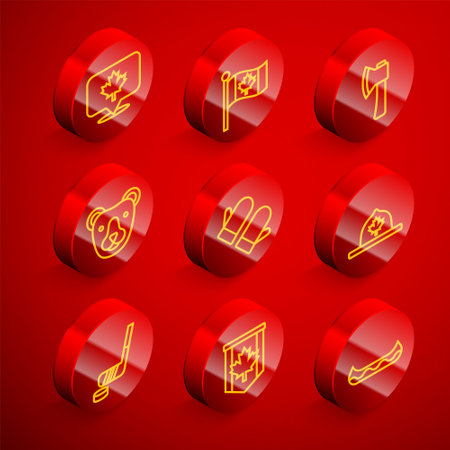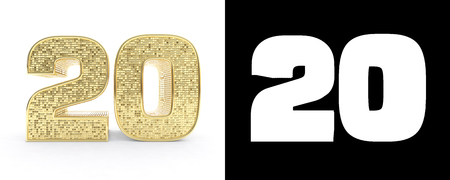Introduction: Bridging Worlds with Chakra Energy
Imagine walking through the misty English countryside at dawn, the air tinged with dew and the promise of a new day. Now, picture yourself in a tranquil Eastern temple, incense swirling around ancient stone, inviting you into quiet contemplation. These contrasting scenes capture the heart of our exploration: how chakra energy, deeply rooted in Eastern philosophy, finds resonance and reinterpretation within British culture. In recent years, chakras have danced gracefully across borders—no longer confined to yoga studios or spiritual retreats but finding their way into British homes, wellness centres, and even everyday conversation. This gentle meeting of East and West invites us to consider not only what chakra energy means in its traditional sense but also how it can be woven into the fabric of modern British life. As we begin this journey, let us keep open minds and curious hearts, for the story of chakras in Britain is as much about bridging worlds as it is about personal discovery.
2. Roots of the Chakra System: Eastern Origins and Traditions
To truly appreciate how chakra energy is interpreted in Britain today, it’s essential to journey back to its origins in the East. The concept of chakras—energy centres within the body—emerged from ancient Indian philosophies, most notably Hinduism and later Buddhism. These spiritual traditions offer a rich tapestry of beliefs, practices, and symbolism that underpin the chakra system as we know it.
In Sanskrit, “chakra” means “wheel,” alluding to spinning vortices of energy believed to align along the spine, from the base to the crown of the head. Early texts such as the Vedas and Upanishads mapped these chakras and described their role in both physical health and spiritual enlightenment. Over centuries, Buddhist thought incorporated chakras into its own frameworks, particularly within Tibetan Buddhism, where the energetic body plays a vital role in meditation practices.
The Seven Main Chakras: An Eastern Perspective
For British readers seeking clarity on what each chakra represents, here’s a concise summary:
| Chakra (Sanskrit) | Location | Associated Qualities | Eastern Symbolism |
|---|---|---|---|
| Muladhara (Root) | Base of Spine | Grounding, Survival | Red Lotus, Earth Element |
| Svadhisthana (Sacral) | Lower Abdomen | Creativity, Emotions | Orange Lotus, Water Element |
| Manipura (Solar Plexus) | Navel Area | Willpower, Confidence | Yellow Lotus, Fire Element |
| Anahata (Heart) | Centre of Chest | Love, Compassion | Green Lotus, Air Element |
| Vishuddha (Throat) | Throat | Communication, Truthfulness | Blue Lotus, Ether Element |
| Ajna (Third Eye) | Brow/Forehead | Intuition, Insight | Indigo Lotus, Light Element |
| Sahasrara (Crown) | Crown of Head | Purity, Enlightenment | Purple/White Lotus, Cosmic Energy |
The British Encounter with Eastern Wisdom
The fascination with chakras in Britain often begins with yoga studios or meditation workshops. But beyond these modern introductions lies a deep reverence for ancient wisdom—a recognition that these teachings were cultivated over millennia. For those in the UK who are curious about holistic well-being or personal transformation, understanding the historical and spiritual foundations of chakras can be both grounding and inspiring.
A Bridge Between Worlds
This exploration of Eastern roots sets the stage for meaningful dialogue between cultures. By tracing chakras back to their original philosophical and spiritual contexts, we lay a foundation upon which British interpretations can respectfully build—merging tradition with contemporary curiosity.

3. Western Wellness: How Britain Encounters and Adapts Chakra Ideas
As the tides of spiritual exploration swept across Britain, the concept of chakra energy found fertile ground for reinterpretation and renewal. Unlike its ancient Eastern origins rooted in Sanskrit texts and meditative traditions, the British encounter with chakras has been marked by curiosity, openness, and a distinctly practical sensibility. From the first whispers in esoteric circles to their place in today’s bustling yoga studios, chakras have become woven into the very fabric of modern wellness culture across the UK.
The Arrival: From Mysticism to Mainstream
Chakra philosophy arrived on British shores through a blend of academic translations and grassroots interest during the 20th century. Early adopters included spiritual seekers, Theosophists, and countercultural movements who saw chakras as a map for self-discovery. Over time, what was once regarded as mystical or exotic became increasingly accepted in mainstream circles, especially as yoga and holistic health practices gained momentum across cities like London, Manchester, and Edinburgh.
Modern Practice: Yoga Studios and Wellness Events
Step inside any British yoga studio today—whether it’s a converted church hall in Cornwall or a chic urban loft in Shoreditch—and you’ll likely hear references to chakras. Instructors might guide students to “open the heart centre” or “ground through the root,” blending traditional terminology with contemporary language that resonates locally. Beyond the mat, wellness festivals such as Balance in London or Mind Body Spirit Festival host chakra workshops that attract both seasoned practitioners and curious newcomers, all eager to experience energetic alignment in a communal setting.
Everyday Language: Chakras in Conversation
Perhaps most telling is how chakra concepts have seeped into everyday British conversation. It’s not uncommon to hear someone mention feeling “a bit blocked” energetically or needing to “rebalance my chakras” after a stressful week. While these phrases may occasionally carry a tongue-in-cheek tone—reflecting classic British wit—they also speak to an underlying openness towards integrating Eastern ideas within local contexts. In this way, chakras have evolved from distant spiritual symbols into accessible tools for well-being, reflection, and even social connection across Britain.
4. Language and Meaning: Talking About Chakras in the British Context
When discussing chakras and subtle energy within the UK, language becomes a fascinating bridge between ancient Eastern concepts and contemporary British sensibilities. The British approach to talking about chakras is often laced with characteristic understatement, wry humour, and an instinctive scepticism that shapes how spiritual topics are discussed in public and private spheres alike.
The Vocabulary of Subtle Energy: Blending East and West
In Britain, the vocabulary surrounding chakras has been adapted to fit local nuances. Terms like “energy centres” or “body’s batteries” are frequently used to make the concept more relatable. This translation of ideas often sees Sanskrit names—Muladhara, Anahata, Vishuddha—set aside in favour of plain English, making these ancient concepts feel less foreign and more accessible. Yet, for those who delve deeper, the original terminology sometimes retains a mystical allure.
Metaphors That Resonate With the British Mindset
| Eastern Metaphor | British Adaptation |
|---|---|
| Spinning Wheels of Light | Batteries that need recharging |
| Lotus Blossoms Opening | Lifting the fog on a chilly morning |
| Rivers of Prana (life-force) | Energy flowing like the Thames through London |
This table illustrates how evocative Eastern metaphors are often translated into everyday British imagery, grounding abstract ideas in lived experience.
Sceptical Humour: The Friendly Filter
British conversations about chakras frequently involve a dose of humour—sometimes gently self-deprecating, sometimes playfully irreverent. Phrases like “a bit woo-woo,” or “all very cosmic,” allow for open dialogue while maintaining a healthy distance from blind belief. This light-heartedness acts as both a shield and an invitation; it gives permission to explore spiritual ideas without feeling pressured to fully subscribe or conform.
The unique blend of practicality, humour, and curiosity found in British discourse creates a safe space where subtle energy can be both questioned and embraced—a testament to the country’s evolving relationship with ancient wisdom.
5. From Scepticism to Spirituality: Navigating Belief and Curiosity
In the heart of Britain, where the fog rolls in over ancient stone circles and city skylines alike, a quiet transformation is unfolding. For generations, our culture has been steeped in rational inquiry—prizing evidence, logic, and the measured pace of scientific progress. Yet, as tales of energetic healing drift across dinner tables and yoga mats, many Brits find themselves standing at a crossroads between scepticism and an emerging spiritual curiosity.
The British Skeptical Tradition
It would be remiss not to acknowledge the very British inclination towards critical thinking. Whether it’s a raised eyebrow at the mention of chakras or a polite chuckle when friends speak of aura cleansing, our national humour often shields us from what we don’t fully understand. This tendency comes from a long legacy of empirical science and a wariness toward anything perceived as ‘woo-woo’. Our education system encourages questioning, and our media loves a healthy debate—especially when it comes to topics like energy healing that challenge conventional wisdom.
A Gentle Shift: The Allure of Eastern Wisdom
Yet beneath this veneer of scepticism, curiosity stirs. It starts quietly—a friend recommending meditation for stress relief, or a colleague sharing how Reiki eased their chronic pain. Stories travel faster than statistics here; personal transformation is hard to argue with when witnessed firsthand. As more Britons seek meaning beyond material success, Eastern philosophies—particularly those around chakra energy—find fertile ground amid our cultural gardens. These concepts offer something many quietly crave: holistic approaches that speak to mind, body, and spirit.
Bridging Worlds: Personal Narratives Spark Change
I recall my own first encounter with chakra balancing. I was hesitant, almost embarrassed to admit I was curious. But in the gentle glow of a local yoga studio, surrounded by others on similar journeys, my scepticism softened into openness. The experience didn’t demand blind belief; rather, it invited exploration through gentle practice and reflection—a distinctly British approach to adopting new ideas.
Embracing Both Head and Heart
Across Britain today, there is no single narrative about chakra energy—rather, there are thousands unfolding every day in quiet living rooms and bustling high streets. We are learning to balance our rational minds with the wisdom of lived experience, allowing space for both doubt and discovery. In this dance between scepticism and spirituality lies the unique British journey: one foot firmly planted in logic, the other stepping bravely towards transformation.
6. Integration and Inspiration: Creating a Contemporary British Chakra Journey
Imagine, for a moment, the gentle meeting of East and West—like the Thames flowing beneath ancient bridges, carrying with it stories from distant lands and local whispers alike. The British approach to chakras need not be a matter of choosing one tradition over another, but rather an invitation to weave both into a living tapestry that honours the rich heritage of the UK while embracing global wisdom. By blending Eastern insights on subtle energy with Western values of individuality, rational inquiry, and community, we can craft a chakra journey that feels both rooted and expansive.
This integration might look like meditating in a sunlit English garden, drawing upon ancient Sanskrit mantras while also reflecting on Shakespearean themes of self-discovery. It could mean gathering friends for mindful walks through the countryside—using the heart chakra as a guide for open conversation—or journaling about your personal energy shifts over tea, echoing Britain’s cherished rituals of reflection and connection.
The uniquely British chakra journey encourages us to ground our spiritual explorations in everyday life. Whether you are sitting in a bustling London café or wandering along the misty moors, there is space for both quiet introspection and shared experience. Let the wisdom of the East inspire you to tune into your inner landscape, while the pragmatic sensibility of the West empowers you to translate those insights into action—perhaps by supporting local causes or nurturing deeper bonds with loved ones.
In this unfolding fusion, there’s no need to follow a rigid set of rules. Instead, let curiosity be your compass and intuition your guide. Ask yourself: How do ancient teachings resonate within my modern British context? What rituals or practices feel authentic to me?
Ultimately, integrating Eastern and Western approaches is an ongoing, personal adventure—one that invites reflection, creativity, and compassion. As you embark on your own contemporary British chakra journey, may you find inspiration not only from timeless traditions but also from the unique rhythm of your daily life. The path inward is yours to shape; each step is both familiar and new.


